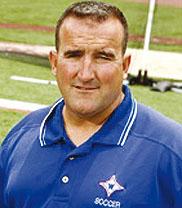
By Stephen Black
Score Atlanta
The 2012-13 school year has brought major changes to the world of Georgia high school soccer. The U.S. Development Soccer Academy is now requiring selected prep players to leave their high school soccer teams to join the academy, which has two teams based in Atlanta.
Selecting players on an invite-only basis, the academy’s goal is to help top high school players reach their peak level of performance.
“The major reason for moving to the 10-month season was for improving player development,” said U.S. Soccer senior manager of communications Neil Buethe. “The academy is focused in on an elite group of players that want to continue at the next level, whether that is professional or college.
And for the elite player, the development academy provides a more focused environment for player development through more training, fewer matches, better competition and rules that are consistent with how the game is played globally.
Extreme Ways….
Founded in 2007, the academy is a partnership between U.S. Soccer and the top clubs around the nation to eventually produce stronger candidates for the U.S. National Team.
[show_disconnected][show_to accesslevel=’Subscriber’] However, it wasn’t until this school year that the academy began requiring players to leave high school teams altogether to join academy clubs full time. This, predictably, has made waves in the metro Atlanta high school soccer community.
Some of the top teams in Georgia were stripped of key players prior to the 2013 season, including defending Class AAAAA champion Collins Hill and traditional powers Lassiter and Walton. Collins Hill, which has won state titles in three of the past four years, lost six returning players to the Development Academy.
“You can’t fault a player for trying to play at the highest level even if it affects them (negatively),” said Collins Hill coach Michael Burrell. “I just wish there was some way we could work it out where they could do both.
“Maybe that’s something we could evolve into. Pro and con, the kids love playing for their high school and their friends.”
Centennial coach Phillip Thomas, whose team is currently ranked #2 in Class AAAAAA, did not lose any players this year. But Thomas still does not like how the academy is treating high school players.
“My issue about the academy is that in the United States right now, the next level of soccer for a teenager is college soccer,” said Thomas. “And a key component to being able to play college soccer is academic requirements. And when you eliminate high school soccer from a kid’s experience in playing soccer, you eliminate that accountability in the academic world and getting used to a five-day work schedule.”
Thomas is referring to the GHSA policy that a student-athlete must be passing four of their five classes in order to be eligible to play for their high school. The development academy has no academic restrictions for players.
At What Cost?…..
The drastic change in how the academy goes about managing its players has been attributed mostly to providing opportunities for elite players.
“Moving to a 10-month season allows us to close the talent gap because it supports an improved player development model that focuses solely on training together three-to-four times a week and playing those meaningful games nearly year round,” said Buethe.
While academy teams in the past would select players for 16-and-under and 18-and-under teams, they never required 10-month participation and mandatory training sessions that prevented high school participation. But prior to the 2012-13 school year, the USSF handed down its latest requirements for academy participation.
“The biggest (problem) I have is with this being the first year the USSF put this into place, they just came out, made a rule, made a statement and that’s it,” said Lassiter coach Sam Dietrich. “There wasn’t really a lot of discussion about it.
“There’s a lot of seniors out there from a lot of schools who had to make a tough decision on whether or not they’d play high school this year. In my opinion, for them to play freshman, sophomore, junior year, and then their senior year someone tells them they can’t or they have to make a choice, it’s put a lot of boys in some hard circumstances where they’ve had to chose one over the other.”
Walton coach Bruce Wade, who lost two returning players to the academy, had another complaint. Wade believes the academy takes players who don’t necessarily have the talent or skill to fit on a national team, and therefore, are wasting their high school years playing for the academy.
“(The academy) forced the kids to make a decision I don’t really care for,” said Wade. “And some of them were starting to quit the development (academy) because they weren’t getting a lot of playing time.
“Kids want to play. Not everybody’s going to be a pro some day. So if you miss out playing your high school years and you don’t play pro or major college, basically you sat around and wasted your time.”
The U.S. Soccer Development Academy has the noble goal of improving the nation’s soccer prowess, but, according to some coaches, may be going about it at the expense of high school and college soccer.
[/show_to][hide_from accesslevel=’Subscriber’]
Your subscription has expired please
Subscribe to Southern Soccer Scene to view full article and get all the news in your mailbox![/hide_from]
